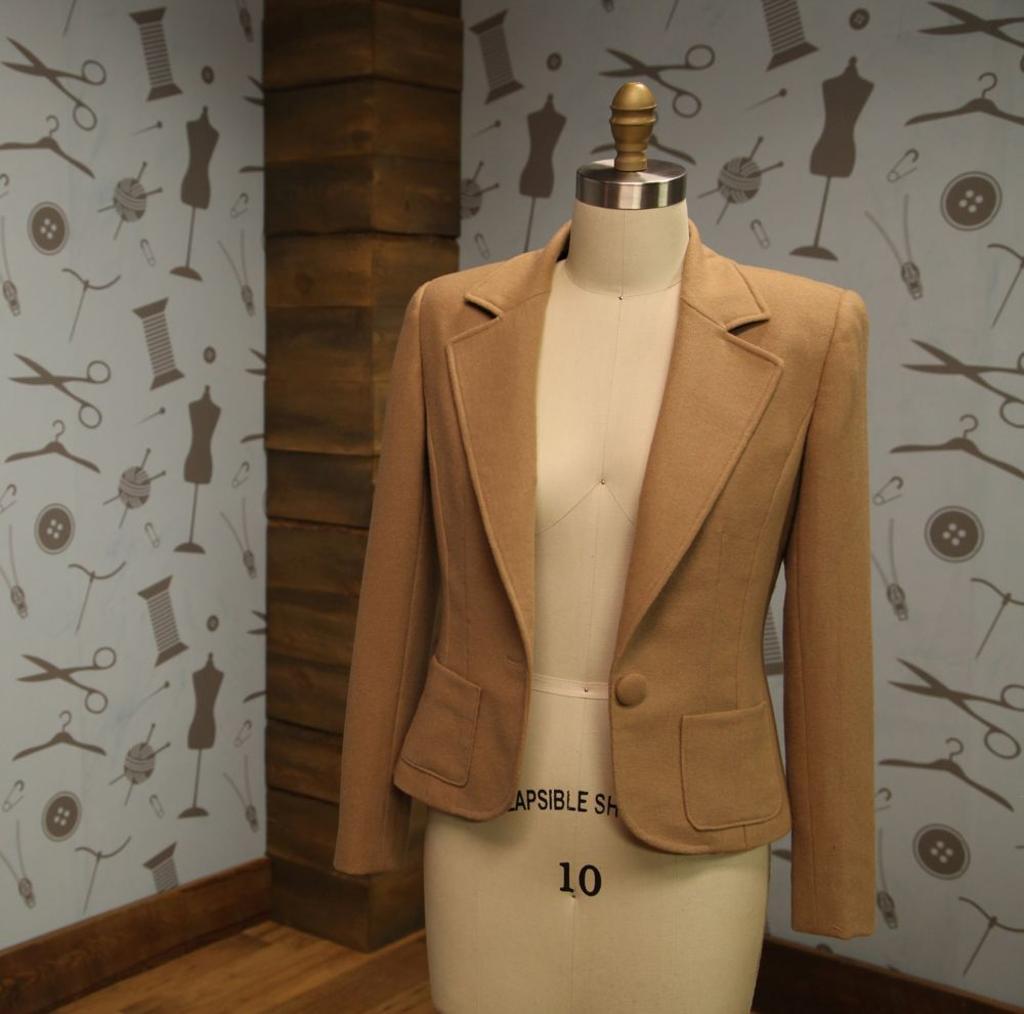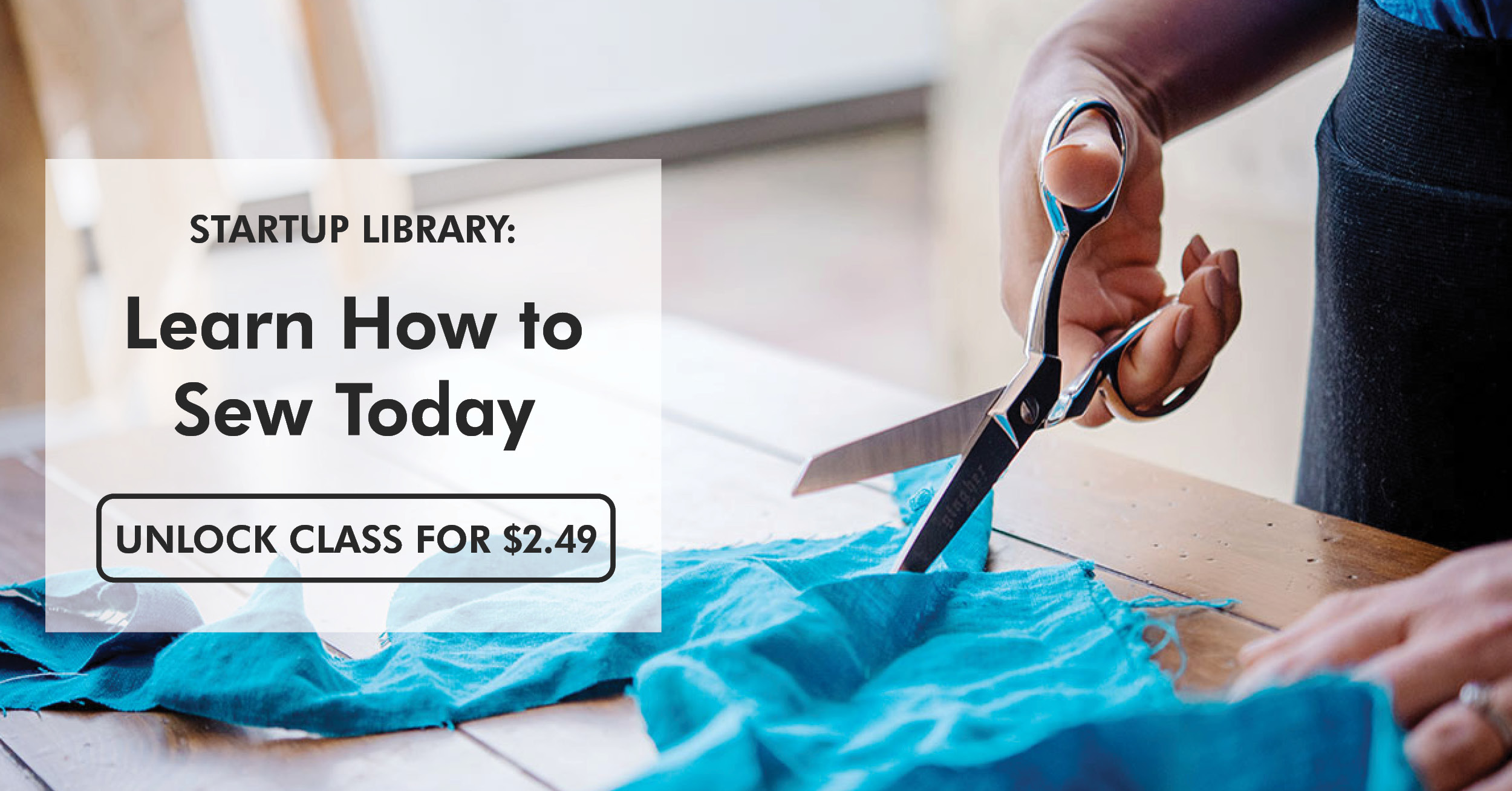
Between the notched lapels and the precise tailoring, a blazer might seem like a strictly pro-level project. But sewing a structured jacket isn’t nearly as tricky as you might think. In fact, most of the skills required are ones you have likely tried — and nailed! — in other sewing projects. And just like any new sewing challenge, mastering a blazer comes down to patience and practice.
And we’re here to help! These simple tips and hacks will make your first foray into blazers as seamless and stress-free as possible. Read on … and start picturing yourself in that sleek new custom-fit blazer!
1. Pick the Perfect Pattern
If you’re not sure what style jacket you want to make, hit the stores with a trusted pal and try on a variety of cuts to see what looks best on you. Take your measuring tape, so you can determine jacket length, lapel width and any other key design elements you’d like to recreate. If this is your fist jacket, consider going with a simpler silhouette (perhaps saving notched collars and lapels for next time).
2. Choose a Fabric That Will Be Your Friend
Natural fibers, such as wool or linen, make great first-time jackets because they shape and press beautifully. Opt for a darker color (it helps hide some of the interior construction) and/or a fabric with some surface texture or interest (which can help camouflage any stitching imperfections). What to avoid: plaids, stripes or patterns that need to be matched up at every seam. You don’t need that kind of aggravation.
3. Don’t Skip the Muslin
There’s too much work involved in making a jacket to end up with something that doesn’t fit you to a tee. Sew up your jacket in a muslin fabric that’s similar in weight to your final garment. Test how it fits over the clothes you intend to wear underneath; also check the length of both the jacket and sleeves, and make sure the circumference at the bust, waist and hip feel good. If you plan to put shoulder pads in the final jacket, place them in your muslin as well.
4. Make Interfacing Easy
Traditional jacket tailoring involves hand-sewing hair canvas, muslin and/or broadcloth interfacings for structure and shape. But you can get great results, with a lot less hassle, using fusible interfacing. The key is to choose an interfacing that’s lighter in weight but stiffer than your jacket fabric. You may even want to have a few different weights of interfacing on hand and do some test samples to see which one works best.
5. To Line or Not to Line: That’s a Good Question!
Adding a lining to your jacket will make it more durable and, if the lining is made out of silk or rayon, more comfy against your skin. Many jacket patterns include lining pattern pieces (if not, it’s easy to draft these patterns from the jacket pattern pieces). If you prefer a more casual look and/or you want to make your project a bit easier, consider going with a half-lining or simply a Hong Kong seam finish. No shame in either!
6. Pick Your Pockets
Tailored jackets can have either patch or welt pockets. Patch pocket can be lined or unlined and are a bit simpler to create. You just apply them by hand or by machine stitching. Welt pockets require more precise stitching and placement, since you will be cutting into the jacket fabric to create the "lips."
7. Give Your Jacket Some Closure
There are all kinds of ways to close your blazer. You could opt for buttons (using machine or bound buttonholes) or snaps, sew in a zipper, or simply make it an open jacket.
That’s the beauty of sewing your own blazer — you get exactly what you want!


These tips are really helpful !
Super Amazing Tips. Thanks!.
I want to do blazer sewing cutting class online
I'm tired of buying clothing that is ill-fitting, poorly made, or costs entirely too much.; I want to be able to create my own clothing.
Precision sewing, with precision machines. From our first machine built in 1884 to the latest models - BERNINA is synonymous with Swiss precision and quality craftsmanship.
Best tips i have seen so far!